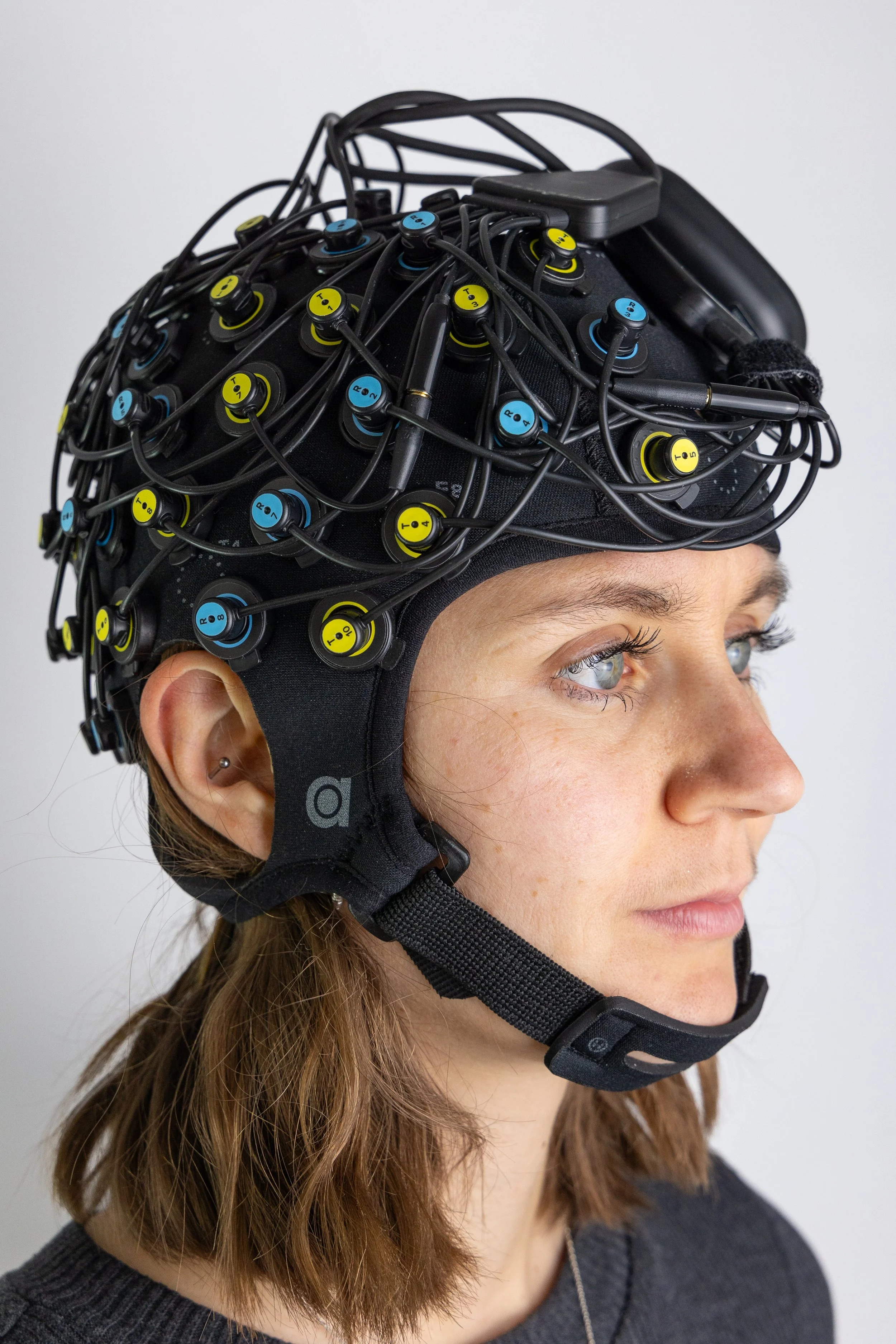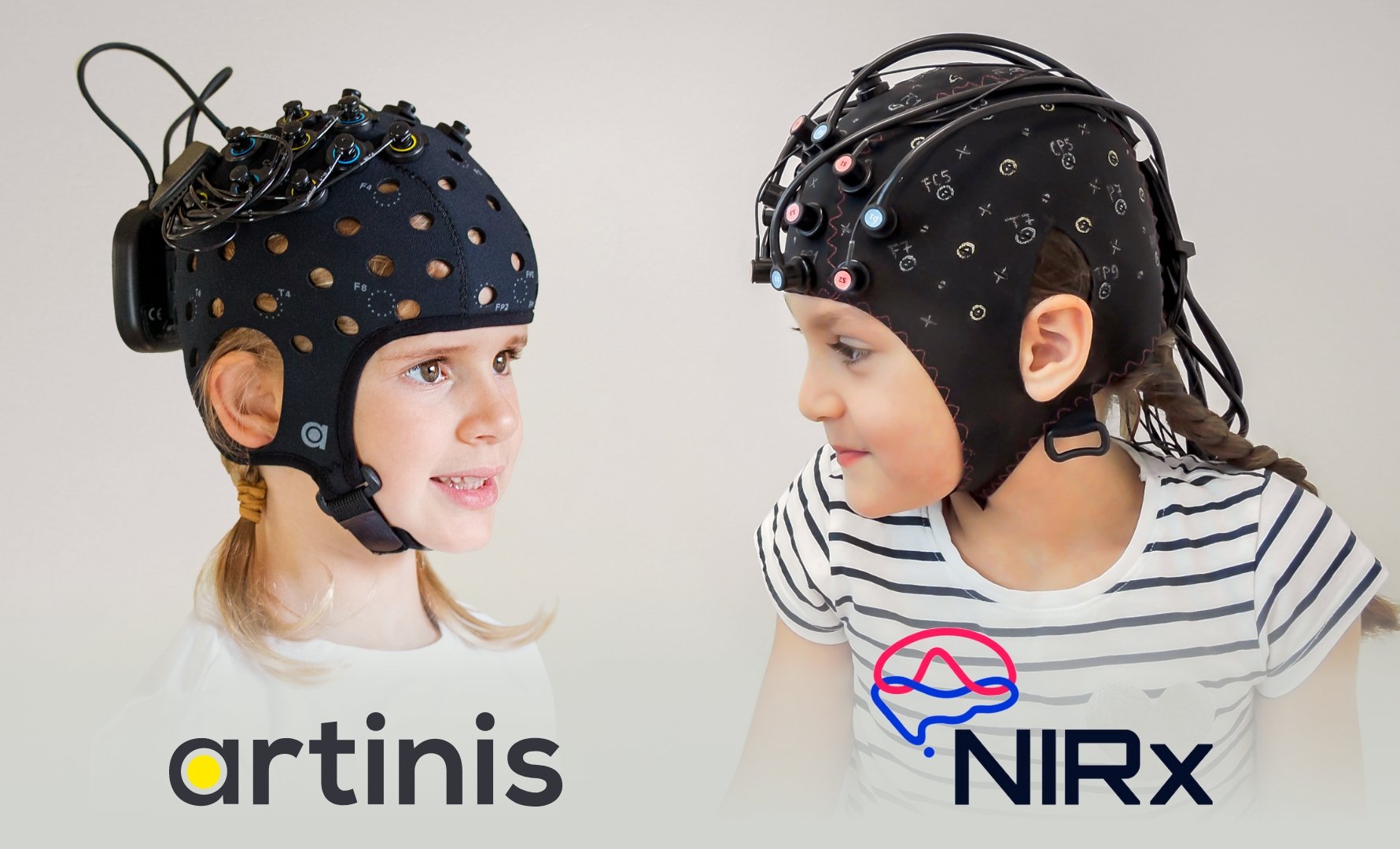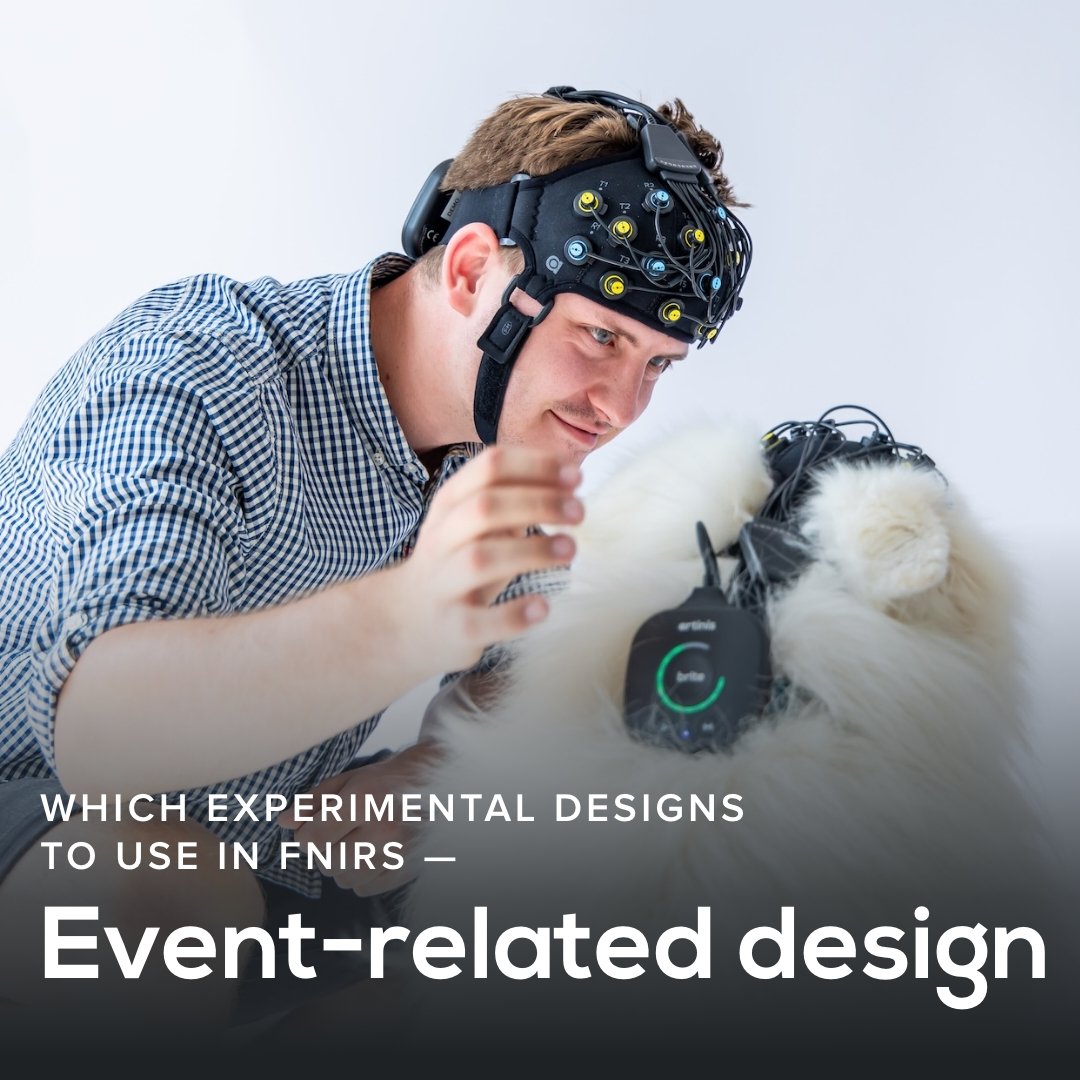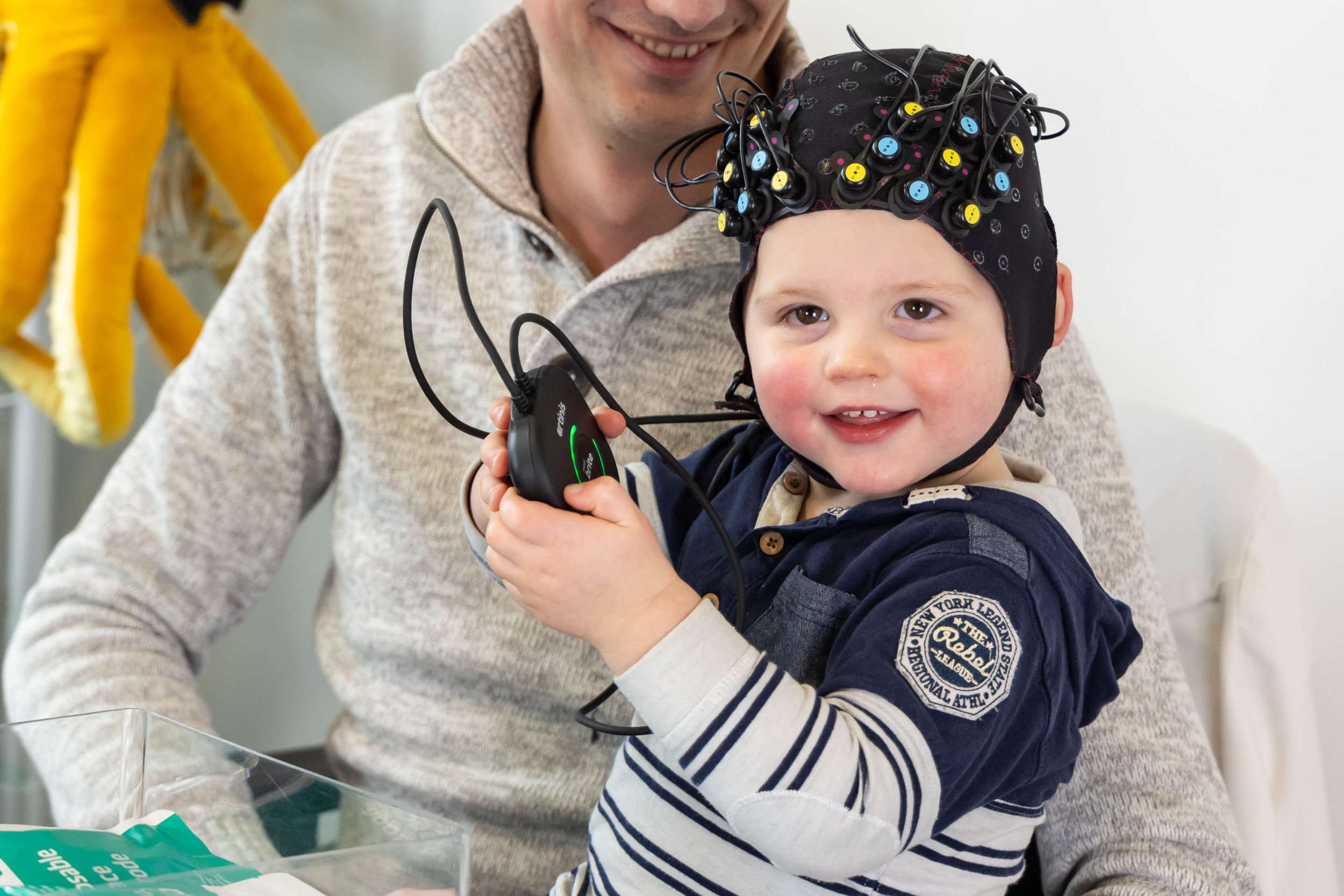Publication overview 2024 - Studies measuring brain and muscle oxygenation simultaneously using our devices
Near-Infrared Spectroscopy (NIRS) is a technique that allows for non-invasive measurements of tissue oxygenation in any local tissue. It is often wearable, portable and relatively easy to use – and hence can be used in a variety of settings in- and outside of the lab, as well as in participants of all ages, sex, origin and condition. Therefore, NIRS is applied in a huge range of applications, from sports science, over hypoxia and altitude research, to clinical studies.
Near-Infrared Spectroscopy (NIRS) is a non-invasive technique used to measure relative concentration changes of oxygenated and deoxygenated hemoglobin, providing information on oxygen status. NIRS can be applied on any tissue and hence allows for simultaneous measurements of brain and muscle oxygenation. This can help to get a complete picture of oxygenation in the whole body and show differences between peripheral and central oxygenation. Therefore, simultaneous measurements of brain and muscle oxygenation with NIRS are frequently performed in many applications, for instance, to assess the effects of altitude, the metabolism of various diseases, or human physiology during sports performance.
At Artinis, we develop NIRS devices to measure both muscle and brain and therefore offer perfect solutions to perform NIRS measurements at various sites. The PortaLite MKII, for instance, enables simultaneous measurement of cerebral and muscular oxygenation using only one device. Further, it is possible to connect our fNIRS devices for brain measurements (i.e. Brite Family) and NIRS devices for muscle measurements (i.e. PortaMon) at the same time in our software OxySoft to guarantee simultaneous measurements of brain and muscle oxygenation.
We are happy to share that last year, 12 papers were published using our devices to measure brain and muscle oxygenation at the same time. Below, we present an overview of the application areas of these papers published in 2024, as seen in Figure 1, and highlight outstanding literature per category.
Application Areas using Artinis devices to measure brain and muscle oxygenation in 2024
Sports Science
Sports and movement not only have a positive effect on muscle growth and performance, but also improve neural functions, for instance on a cognitive and executive level. Hence, measuring brain and muscle simultaneously during exercise performance can provide important insights into the physiological mechanisms of the complete human body. This can further be used, for instance, for developing therapy strategies for clinical populations or improvement strategies for the performance of elite athletes.
To assess the latter, Woorons et al. performed a study examining the effects of hypoventilation-induced hypoxia on the repetition of high-intensity training efforts in elite judo athletes. Participants were randomly divided into two groups, performing 8 sessions of rowing repeated-sprint exercise, either with hypoventilation or with unrestricted breathing. Before, 5-days after and 12-days after the training, muscle and brain oxygenation were measured using the PortaMon and PortaLite, respectively. Findings showed that the hypoventilation protocol applied improved the athletes’ ability to repeat high-intensity and demonstrated redistribution of blood volume to meet theincreased muscle perfusion.
Clinical and rehabilitation
Clinical conditions in various fields, such as cardiology or neurology, often involve changes in oxygen status in the body. These changes may differ in terms of central oxygenation in the brain and peripheral oxygenation in the skeletal muscle tissue. Measuring NIRS from the brain and muscle simultaneously can be used to assess differences in oxygenation at different sites, which can further be compared between healthy and clinical populations. Additionally, it can be applied to assess the effects of therapy strategies on the whole body in diseased participants.
In a study published in 2024, Machfer et al. investigated whether exercise-induced neuromuscular fatigue is linked to oxygen supply in the brain and muscle to provide insights into reduced exercise capacity in patients with end-stage renal disease (ESRD). Amongst other measurements, tissue oxygenation was measured on the prefrontal cortex and vastus lateralis simultaneously using the OxyMon in ESRD and healthy controls during exercise. Results indicated that cerebral hypoperfusion might play a role in the reduction of exercise capacity in ESRD patients.
Hypoxia and altitude
Hypoxia is defined as any condition in which the oxygen demand of a tissue exceeds its supply leading to oxygen deprivation. Since the body is in constant need of oxygen, it has developed various mechanisms to detect the oxygen level, as well as to counter hypoxia and achieve a higher oxygen supply. Measuring oxygenation with NIRS of both the brain and muscle simultaneously during hypoxia and altitude studies can help understand the effects of hypoxic conditions on central and peripheral mechanisms. Furthermore, it can be used to investigate coping mechanisms for hypoxia and how they influence whole-body oxygenation.
Narang and colleagues compared the response of prematurely born and term-born adults during early high-altitude acclimatization at rest and during exercise performance. Amongst other measurements, brain and muscle oxygenation were measured using the PortaLite during a 3-day high altitude stay. Findings demonstrated comparable acclimatization between term- and preterm-born adults, with the latter even showing better maintenance of cerebral oxygenation at rest.
Would you like to learn more about using our devices to measure brain and muscle oxygenation at the same time? Then feel free to reach out to us at askforinfo@artinis.com.


![[PortaMon MKIII] crossfit-31.jpg](https://images.squarespace-cdn.com/content/v1/64e314a8c69b933a41187ec2/1735569370336-RBNXN074RNXCB35ZWS1N/%5BPortaMon+MKIII%5D+crossfit-31.jpg)
![[PortaMon MKIII] crossfit-32.jpg](https://images.squarespace-cdn.com/content/v1/64e314a8c69b933a41187ec2/1735569373321-QX85ZY15FP1IKZMSWTO4/%5BPortaMon+MKIII%5D+crossfit-32.jpg)








We are happy to announce the release of our new Brite MKIV! Including novel receiver with increased sensitivity & latest and enhanced software and accessories, setup time can be significantly decreased with the Brite MKIV - in every subject and setting! Read this blogpost to learn more about the new features, novel accessories and latest updates of our Brite MKIV!